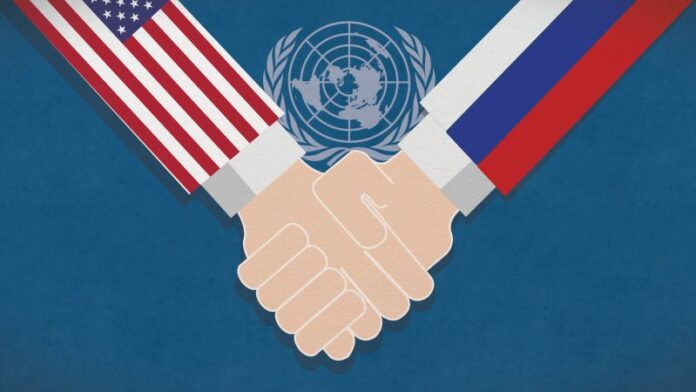Author: Martin Russell
Affiliations: European Parliament Research Service (EPRS)
Organization/Publisher: European Parliament
Date/Place: February 8, 2022/Brussels, Belgium
Type of Literature: Analysis
Word Count: 6963
Link: https://www.europarl.europa.eu/RegData/etudes/BRIE/2022/698919/EPRS_BRI(2022)698919_EN.pdf
Keywords: Russia, Ukraine, US, Geopolitics, and Security
Brief:
In 1989 the Soviet leader Mikhail Gorbachev and US President George Bush met at the Malta Summit. They declared the end of the Cold War, the military and geopolitical rivalry between the United States and the Soviet Union and their respective allies that developed after World War II. This marked a new start of relations that spread hopes of sustainable peace and cordial relations between the two superpowers. After the collapse of the Soviet Union and its ideology of socialism, the US helped and facilitated Russia to adopt market-economy reforms, join the World Bank and the IMF in 1992, and be admitted to the G8 in 1997, along with other democratization initiatives. Furthermore, the two countries agreed on a series of arms-control mechanisms and to work together on the International Space Station. Despite such rapprochements, there were apparent frictions between the two, such as disagreements over Russia’s wars in Chechnya, NATO’s war against Yugoslavia in 1999, and the US invasion of Iraq in 2003. However, none of the contentious issues has been more damaging in the relations between the two former Cold War enemies than NATO enlargement.
The expansion and presence of NATO’s military infrastructure closer to Russia’s borders is the top list of Russian national security and military doctrines. NATO has expanded its memberships and bases to Eastern Europe to engulf most ex-Soviet states. The most recent member states, Montenegro and North Macedonia, were added to NATO membership in 2017 and 2020. In 2021, NATO officially recognized three member states: Bosnia and Herzegovina, Georgia, and Ukraine. On the other hand, Russia views the eastward moves of the NATO and membership of several former Soviet states—notably the prospective addition of Ukraine to the alliance—as a threat to its national security and sovereignty. Russia has reacted to the alliance’s aggressive moves. In 2014, Russia controlled the Ukrainian strategic territory of Crimea, which has often been considered the landmark of ongoing tensions between US/NATO and Russia. Since then, the US and its European allies have adopted strong sanctions against Russia. The sanctions resulted in Russia losing 6 % of its GDP between 2014 and 2018. Moreover, the US has applied sanctions on targeted Russian government officials and institutions, mainly defense, energy, and banking, for their involvement in violating Ukrainian sovereignty. Against these threatening developments, Russia requested security guarantees from NATO in December 2021, including warnings of unidentified ‘military-technical measures’ if the latter fails to meet these Russian demands. More specifically, Russia wanted NATO to halt its eastward expansions, including Ukraine and the alliance’s military activities in the Ukraine, eastern Europe, the Caucasus, and Central Asia. The Ukrainian crisis mounted from bad to worse in 2021, when more than 80,000 Russian troops approached Ukraine’s borders. The incident triggered fears of full-scale invasion among Ukrainians and tensions between the US and its European allies and Russia. Russia is dogged to halt NATO’s further expansion into former Soviet lands in eastern Europe, as these former Soviet territories are a buffer zone crucial to its security and influence sphere. Russia’s renewed military activity in Ukraine in 2021 responds to NATO’s continued eastward advances. The US has warned Russia that it will take a vigorous response if the invasion of Ukraine happens. In January 2022, Russia increased its military activities, and the number of troops stationed close to the Ukrainian border has reached 130,000. At the same time, the Biden administration announced USD $200 million for Ukraine’s military, in addition to the USD $450 million already delivered in 2021. The US military aid for Ukraine includes training and weapons such as lethal Javelin anti-tank missiles. Both the US and Russia are likely to avoid direct conflict by every possible means. Although most of the bilateral agreements to control arms that helped the two maintain the fragile military balance have been eroded, diplomatic efforts were launched at the first Biden-Putin summit in June 2021 to preserve strategic stability. The role of economics in US-Russia relations is much less than geopolitics; the two countries have minimal trade, and sanctions particularly have constrained investment and economic interactions between them since 2014. Similarly, people-to-people interactions have minor roles in lessening geopolitical tensions between the two Cold War adversaries—both Russians and Americans rarely like to travel, study or work in the other’s country and reflect negative views towards each other’s country.
By: Jemal Muhamed, CIGA Senior Research Associate




